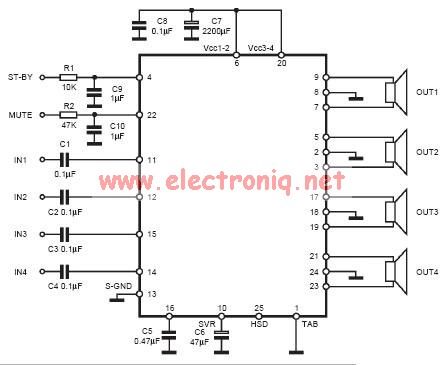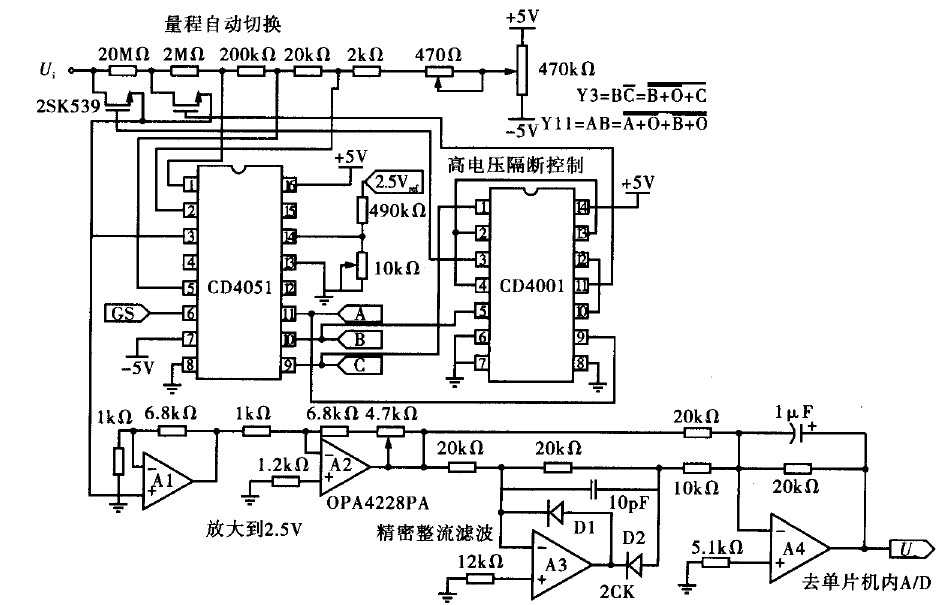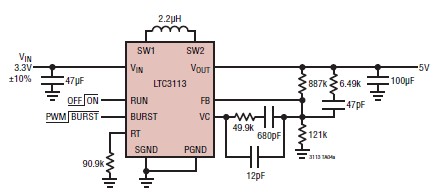
AD Design

The right leg driver circuit is where many amplifier board circuits' common signals are summed and inverted through the Right Leg Driver circuit and sent back to the body to cancel out common voltages. This ground point could be an earlobe. There is also a 3 Volt to 5 Volt level converter that facilitates communication between the A-D converter, which outputs 3 volts digital, and the microcontroller that operates at 5 volts.
The right leg driver circuit plays a crucial role in biomedical applications, particularly in electrocardiogram (ECG) systems, where it helps eliminate noise and interference from the signal being measured. The circuit achieves this by summing and inverting the common mode signals from multiple amplifier boards, effectively reducing the common voltage present in the system. The output is then fed back to the patient's body, often through a point such as the earlobe, which serves as a reference ground.
In addition to its primary function, the circuit includes a level converter that bridges the communication gap between components operating at different voltage levels. The A-D converter outputs a digital signal at 3 volts, while the microcontroller is designed to operate at 5 volts. The level converter ensures that signals can be accurately transmitted between these components without risk of damage or data loss due to voltage mismatches.
The design of the right leg driver circuit typically incorporates operational amplifiers configured for summation and inversion, along with passive components such as resistors and capacitors to filter and stabilize the signals. The level converter may utilize a dedicated IC or a simple transistor-based design to shift the voltage levels appropriately. Overall, this circuit is essential for maintaining signal integrity in sensitive electronic systems where accurate measurements are critical.The right leg driver circuit is where many amplifier board circuits common signals are summed and inverted though the Right Leg Driver circuit & sent back to the body to cancil out common voltages. This ground point could be a ear lobe. Their also is a 3 Volt to 5 Volt level converter that is to communicate between the A-D converter that outputs 3
volts digital and the microcontroler that runs at 5 volts. 🔗 External reference
The right leg driver circuit plays a crucial role in biomedical applications, particularly in electrocardiogram (ECG) systems, where it helps eliminate noise and interference from the signal being measured. The circuit achieves this by summing and inverting the common mode signals from multiple amplifier boards, effectively reducing the common voltage present in the system. The output is then fed back to the patient's body, often through a point such as the earlobe, which serves as a reference ground.
In addition to its primary function, the circuit includes a level converter that bridges the communication gap between components operating at different voltage levels. The A-D converter outputs a digital signal at 3 volts, while the microcontroller is designed to operate at 5 volts. The level converter ensures that signals can be accurately transmitted between these components without risk of damage or data loss due to voltage mismatches.
The design of the right leg driver circuit typically incorporates operational amplifiers configured for summation and inversion, along with passive components such as resistors and capacitors to filter and stabilize the signals. The level converter may utilize a dedicated IC or a simple transistor-based design to shift the voltage levels appropriately. Overall, this circuit is essential for maintaining signal integrity in sensitive electronic systems where accurate measurements are critical.The right leg driver circuit is where many amplifier board circuits common signals are summed and inverted though the Right Leg Driver circuit & sent back to the body to cancil out common voltages. This ground point could be a ear lobe. Their also is a 3 Volt to 5 Volt level converter that is to communicate between the A-D converter that outputs 3
volts digital and the microcontroler that runs at 5 volts. 🔗 External reference





